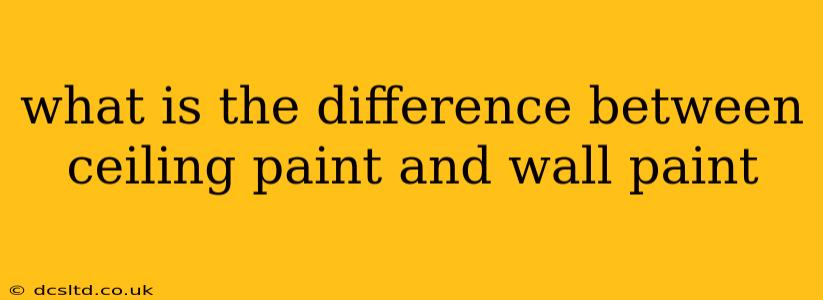Choosing the right paint for your walls and ceiling might seem simple, but there are key differences between ceiling paint and wall paint that significantly impact the final look and longevity of your paint job. Understanding these differences will help you achieve a professional-looking finish that lasts.
What Makes Ceiling Paint Different?
Ceiling paint is specifically formulated to address the unique challenges of painting ceilings. These challenges include:
-
Less Visible Imperfections: Because ceilings are typically viewed from below and at a distance, minor imperfections are less noticeable. Therefore, ceiling paint often has a higher hiding power, meaning it covers flaws more effectively than wall paint.
-
Flat Finish: Ceiling paint usually comes in a flat or matte finish. This type of finish minimizes the appearance of imperfections and unevenness, resulting in a smoother-looking surface. Glossy finishes would highlight every bump and imperfection, making them unsuitable for most ceilings.
-
Stain Resistance: While not always a primary focus, some ceiling paints offer improved stain resistance, helpful in areas prone to dust, cobwebs, or other airborne particles. Cleaning a ceiling is more challenging than a wall, so stain resistance is a valuable feature.
What Makes Wall Paint Different?
Wall paint is designed to meet the demands of a more visible and frequently touched surface. Key differences include:
-
Variety of Finishes: Wall paint offers a wider range of finishes beyond matte, including eggshell, satin, semi-gloss, and high-gloss. These finishes provide varying levels of durability, scrubbability, and sheen, allowing you to choose the best option for your room and lifestyle.
-
Washability: Wall paint is often more washable than ceiling paint due to its higher durability. This is crucial in high-traffic areas or rooms with children and pets.
-
Color Selection: Wall paints generally have a broader palette of colors available, allowing for greater design flexibility.
Can I Use Wall Paint on the Ceiling?
While you can use wall paint on your ceiling, it's generally not recommended. The higher sheen in some wall paints will highlight imperfections, resulting in an uneven and unattractive finish. The thicker consistency of some wall paints can also make application more difficult on a ceiling.
Can I Use Ceiling Paint on the Walls?
Using ceiling paint on walls is possible, but it might not be ideal. The flat finish might not provide the desired level of washability or durability, especially in high-traffic areas.
What are the Key Differences Summarized?
| Feature | Ceiling Paint | Wall Paint |
|---|---|---|
| Finish | Typically flat or matte | Wide range (flat, eggshell, satin, etc.) |
| Hiding Power | Higher | Lower |
| Washability | Lower | Higher |
| Durability | Lower | Higher |
| Color Selection | More limited | Wider range |
How Do I Choose the Right Paint?
Consider these factors when selecting paint:
- The Room's Purpose: A high-traffic area needs a more durable and washable paint than a seldom-used guest room.
- The Surface Condition: If your ceiling or walls have imperfections, a paint with higher hiding power is essential.
- The Desired Finish: Consider the sheen and level of washability you need.
- Your Budget: Paint prices vary depending on brand, quality, and finish.
By understanding the specific characteristics of ceiling and wall paints, you can make an informed choice to achieve a professional and long-lasting paint job in your home. Remember to always prepare the surface properly before painting for optimal results.
